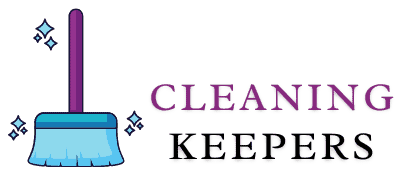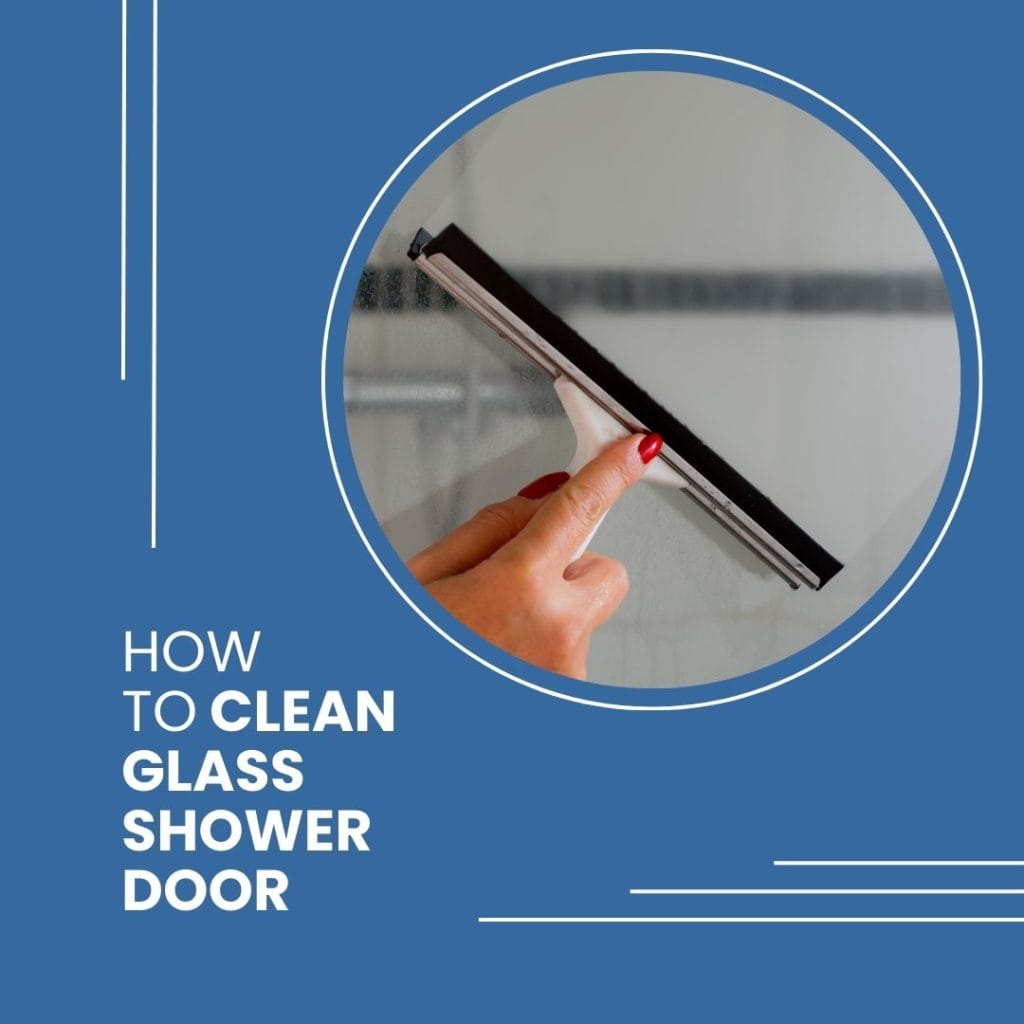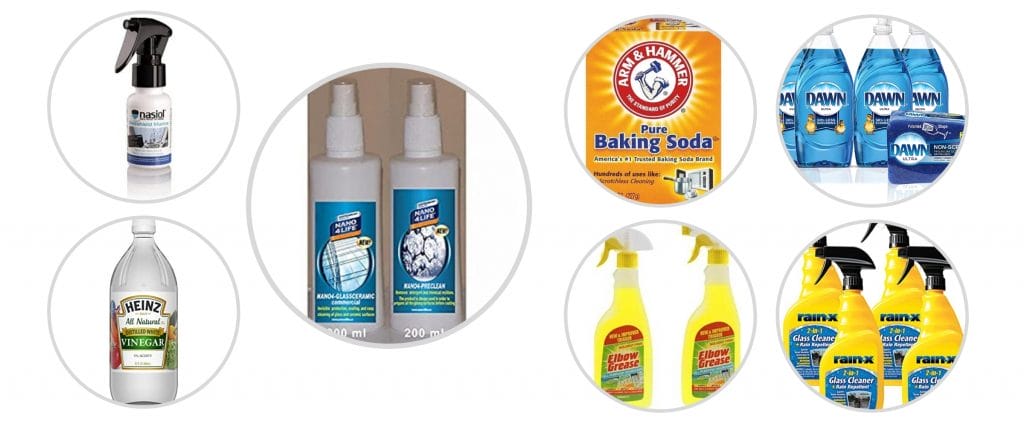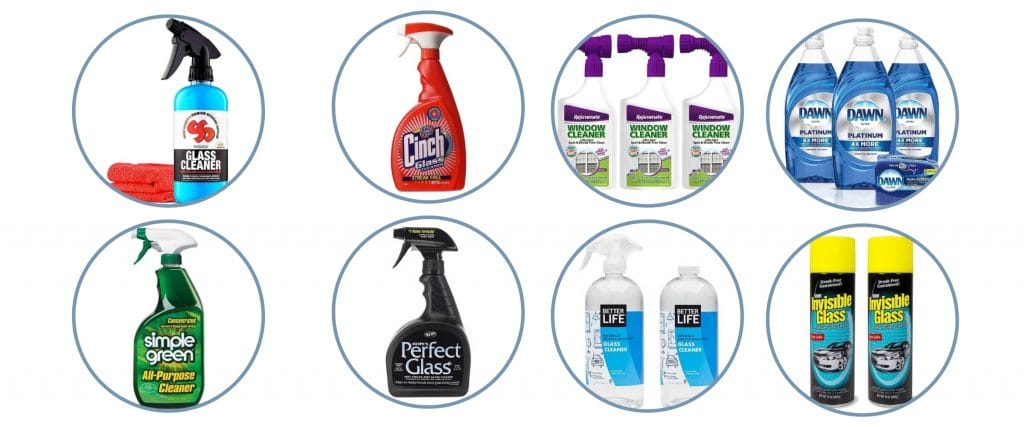Navigating the maze of advice on window cleaning can be bewildering, with varying opinions on everything from the ideal cleaning chemicals to the perfect cloth material, not to mention the myriad strategies for preventing smudges post-cleaning.
This overload of often contradictory guidance makes it tough to pinpoint the right approach for achieving spotless, streak-free windows. That’s why we’ve crafted this all-encompassing manual, designed to debunk the myths surrounding window cleaning and enlighten you on the simplest, most productive, and most effective techniques for sparkling windows, both inside and outside your home.
Common Mistakes to Avoid
When you end up with streaks and smudges on your windows after cleaning, it’s easy to assume that you’re lacking a crucial tool, a superior cleaning solution, or a different method. This belief usually leads to an overly complicated cleaning routine with additional steps.
However, the real issue often lies in overcomplicating the cleaning process itself. The five primary pitfalls in window cleaning are as follows:
Minimizing Cleaning Chemical Usage
The top mistake many make is using excessive cleaning chemicals. A small amount is sufficient, as its main role is to lift stubborn dirt. Overusing these chemicals on windows can be counterproductive. Excess cleaner is challenging to fully remove, and once the window dries, the leftover chemical residue often leads to smearing.
Avoiding Lint-Producing Materials
A common error is using hand towels or paper products that leave lint behind, making windows appear dusty post-cleaning. For more specific advice on avoiding such mistakes, especially in challenging environments like coastal areas, see our article on the best window cleaners for salt air. These materials tend to disintegrate when damp, leaving lint particles on the window surface.
Timing Your Cleaning Right
Cleaning windows while the sun is out is another frequent misstep. Although it seems pleasant to clean on sunny days, it’s disadvantageous. The sun accelerates the drying process, not allowing sufficient time to rinse off cleaning agents, leading to unwanted smears.
Ensuring Proper Rinsing
A less obvious but crucial mistake is insufficient rinsing. Many overlook the importance of thoroughly rinsing the windows after applying cleaning agents. This oversight can leave traces of cleaner, which, as the window dries, contributes to streaks and spots.
Using the Right Cloth Material
Finally, the choice of cloth material is essential. Avoiding fabrics that are too abrasive or that don’t absorb well can make a significant difference. Using the wrong type of cloth can either scratch the window surface or fail to effectively remove cleaning solutions and dirt, resulting in a less-than-satisfactory finish
Equip Yourself for Window Cleaning
It’s a well-known adage: the right tools are key to successful outcomes, and window cleaning is no exception. Preparing with appropriate window cleaning equipment is crucial for efficiency and effectiveness. Fortunately, equipping yourself adequately doesn’t necessarily mean a hefty investment. It’s about having a set of fundamental items that simplify and enhance the cleaning process.
Essential Window Cleaning Tools and Supplies
Here’s a comprehensive list of indispensable tools, equipment, and cleaning solutions for window cleaning:
- Microfiber Cloths or Microglass Cloths: Ideal for leaving a streak-free finish.
- Large Bucket: For holding clean water.
- Clover Brite or Evans Clear: Effective cleaning solutions.
- Spray Bottle: Handy for applying cleaning solutions.
- Squeegee: Essential for a smooth, streak-free finish.
- Extension Pole: Crucial for reaching higher windows without a ladder. For a more detailed discussion on tools and their effectiveness, especially for exterior windows, check out our article on the best window cleaner for exterior windows.
- Ladder (for Second-Floor Windows): A stable ladder is a must for safely accessing higher windows.
- Window Scraper: Useful for removing stubborn marks or debris.
- Detergent: Select a gentle, effective detergent that works well with your chosen tools.
- Gloves: Protect your hands during cleaning, especially when using chemicals.
- Ladder Stabilizers (for Safety): If using a ladder, stabilizers ensure safety and balance.
These tools not only make the window cleaning process more efficient but also ensure safety, especially when dealing with hard-to-reach windows.
The Comprehensive Guide to Window Cleaning: Step-by-Step
Equipped with the right tools and materials, you’re set to embark on the window cleaning process. Adhering to this step-by-step guide and preparing everything in advance will ensure a successful and efficient window glass cleaning.
Preparing for the Clean
- Water Preparation: Begin by filling your bucket with clean water. Ensure no residue or dirt is in the bucket, as you’ll use this water for rinsing your microfiber cloth and the windows after applying the cleaning solution.
- Mixing the Cleaning Solution: If using Clover Brite, Evans Clear, or a similar cleaner, mix it with water as per the instructions on the container. Achieving the correct chemical-to-water ratio is crucial for effectiveness and ease of rinsing.
- Setting Up Your Tools: Prepare a spray bottle with your cleaning solution for easy application. Have your microfiber or microglass cloth ready – these cloths are excellent for absorbing liquid and lifting dirt from your windows. Remember, these clothes perform best when they are clean, dry, and well-maintained. If a microfiber cloth isn’t available, a lint-free alternative like a newspaper can be used.
Cleaning Inside Windows
- Application: Spray the cleaning solution in the center of the window. Use a damp microfiber cloth to wipe from the center outward, ensuring even coverage.
- Rinsing: After applying the cleaner, rinse the cloth in your bucket, wring it to a damp state, and wipe the window to remove excess water or cleaner.
- Drying: The absorbent nature of the microfiber or microglass cloth should eliminate the need for additional drying. Leave the window to air dry for a streak-free finish.
Cleaning Outside Windows
- Fresh Tools: Start with fresh water in your bucket and a clean microfiber cloth to avoid transferring dirt from inside cleaning.
- Repeat Process: Clean the outside windows using the same method as inside. Remember, exterior windows might be dirtier due to exposure to the elements.
- Additional Considerations: For extremely dirty windows, perform an initial wash, allow them to dry, and repeat the process until the windows are spotless.
Note: Avoid cleaning glass windows in direct sunlight to prevent the cleaning solution from evaporating too quickly and leaving streaks.
Choosing the Right Cleaning Chemicals for Your Windows
The market is flooded with various cleaning chemicals, and preferences can vary widely. However, we particularly recommend Clover Brite and Evans Clear. These have emerged as top choices for commercial cleaners among our customers for their effectiveness. For additional insights on selecting the right cleaning chemicals, you might want to read cleaning glass shower doors, which provides valuable information on dealing with hard water stains and soap scum.
Key Guidelines for Using Cleaning Chemicals
No matter which cleaning solution you choose, it’s critical to:
- Adhere to Instructions: Always follow the directions on the container, paying close attention to the recommended water-to-chemical ratio.
- Avoid Overuse: Applying too much chemical can be counterproductive. It’s crucial to use just enough to get the job done.
Understanding the Role of Cleaning Chemicals
The primary function of a cleaning chemical is to break the surface tension of dirt and grime, simplifying its removal. This principle is universal across different surfaces. However, windows typically don’t accumulate heavy dirt, so a modest amount of chemical or surfactant is sufficient. This minimal quantity is enough to break down the dirt, allowing for easy wiping with a microfiber cloth.
Natural Alternatives for Window Cleaning
For those who prefer to avoid chemicals in their cleaning routine, there are several effective natural options available.
Distilled Vinegar
A highly popular choice for eco-friendly window cleaning is distilled vinegar, also known as white wine vinegar. Its effectiveness in leaving windows clean, clear, and streak-free is well-regarded by many. To use distilled white vinegar yourself, mix it with water in a 1:10 ratio (1 part vinegar to 10 parts water). Apply this solution to the window with a damp microfiber cloth and then rinse off with water for optimal results.
The Simplicity of Water-Only Cleaning
If neither chemical cleaners nor vinegar appeal to you, consider the simplicity of using just warm water first. This method works well, especially if your windows aren’t heavily soiled. Employ a new, clean, ultra-absorbent cloth like a glass fiber cloth for this purpose. The water aids in lifting dust and light stains, while the cloth effectively removes the dirty water, allowing the window to dry clean and without streaks.
Using Distilled Water for an Enhanced Effect
To elevate this water-only approach, you can opt for distilled water. Distilled water, being free from minerals and other deposits, won’t leave water marks or streaks on your windows after cleaning. This step adds an extra level of care, ensuring your windows remain spotlessly clear and free from any residue that tap water might leave behind.
Effective DIY Window and Glass Cleaning Solutions
If commercial glass cleaners haven’t met your expectations, don’t worry. You likely have the ingredients for an effective best homemade window cleaner or cleaner already. Here are some top DIY window and glass cleaning methods that are simple and efficient:
1. Vinegar
Our top recommendation is using white distilled vinegar. Mix 1 part white vinegar with 2 parts water in a spray bottle. The vinegar’s acidity makes it an excellent glass cleaner, capable of killing bacteria and cutting through grime. This method is not only effective but also very easy to prepare.
2. Lemon Juice
For those who find vinegar’s smell too strong, lemon juice is a great alternative. Replace the vinegar in the above recipe with lemon juice. Lemon’s acidity is slightly stronger than vinegar’s, offering similar cleaning effectiveness with a much more pleasant, fresh scent.
3. Dish Soap
Dish or liquid dish soap is another versatile ingredient for DIY cleaning solutions. Just a few drops mixed with clean water can create an effective window cleaner. Alternatively, add a drop or two of dish soap to the vinegar or lemon juice solutions for an extra cleaning boost.
4. Tea Tree Essential Oil
To mask the scent of vinegar and add antibacterial properties, consider adding tea tree essential oil to your DIY cleaning mixtures. Its pleasant aroma and mold-prevention qualities make it a great addition. A few drops in your preferred cleaning solution can enhance both the cleaning power and the fragrance, making it ideal for use with the vinegar-based cleaner.
These DIY solutions offer a range of options to suit different preferences, ensuring your windows and other glass surfaces can be cleaned effectively with ingredients you likely already have at home.
Guide for DIY Window Cleaning
Before diving into the cleaning process, it’s important to prepare both yourself and your home to ensure a smooth and efficient cleaning experience. Using cleaning products and water requires some precautions to protect your home’s interior. Here are some key preparation steps:
- Lay Towels: Place towels beneath the window you’re cleaning. Keep extra towels handy for any unexpected spills.
- Dust Removal: Use a vacuum or a damp cloth to remove any dust and loose debris around the windows. This step prevents dirt from mixing with your cleaning solution.
- Blinds and Dusting: If your windows have blinds, pull them up and give them a thorough dusting to prevent dust from resettling on clean windows.
- Curtains Management: Move curtains out of the way. Consider shaking them outside and, if they are fabric, giving them a wash or a quick cycle in the dryer to remove dust.
- Screen Removal: If your windows have removable screens, take them out. Label each screen for easy reinstallation. It’s also beneficial to rinse the screens with a hose and let them dry outdoors before putting them back.
- Gathering Cleaning Tools: Ensure all your cleaning supplies are at hand. You will need microfiber cloths (avoiding paper towels or newspapers that can leave streaks or lint), a squeegee, a spray bottle, a glass cleaner or your chosen cleaning solution, and water.
These preparation steps will not only protect your home from water and product spills but also streamline your window cleaning process, making it more effective and less time-consuming.
Cleaning Hard-to-Reach Windows
Tackling second-floor windows can be daunting, especially when comparing their cleanliness to your freshly cleaned lower-level windows. Cleaning from the inside is manageable, but the true challenge lies in accessing the exterior surfaces of these elevated windows. Here are a few strategies to consider, each requiring a different level of investment and effort.
External Cleaning with a Telescopic Water-Fed Pole
Using a telescopic cleaning pole, particularly a water-fed model, can effectively reach and clean second-floor windows. For comprehensive guidance on cleaning difficult areas like window sills, refer to our detailed guide on effective window sill cleaning. These poles vary in price and functionality but be prepared for a significant investment. While they enhance your cleaning capabilities, they come with drawbacks like storage challenges and the physical effort required. If your windows are just slightly out of reach, a long-handled mop or brush can be a more affordable and manageable alternative.
Internal Cleaning with a Magic Window Cleaning Kit
Magic window cleaning kits offer a novel solution for cleaning the exteriors of second-floor windows from the inside. These kits use magnetized tools that work in tandem—one part outside the window and one inside. They’re often connected by a cord for safety. The inside tool controls the movement, allowing you to clean the exterior glass surface more effortlessly. For those seeking a simpler option, U-shaped telescopic poles with adjustable angles can also be used from inside to reach and clean the external window surface.
Employing Professional Help
When the task seems too daunting or risky, hiring a professional window cleaner is always a viable option. While it might initially feel like giving up, considering the costs and efforts associated with specialized equipment for second-floor windows, professional services can often be a more practical and cost-effective choice. To maximize efficiency and savings, you could clean the interiors yourself and leave the exterior surfaces to the professionals.
How Often Should You Clean Your Windows
Tackling window cleaning, particularly both inside and outside, can indeed be a time-intensive task. However, the frequency of this chore is less daunting than you might expect. Generally, it’s recommended to clean both sides of your windows around 2 to 3 times annually, though this can vary based on your local environment.
Factors Influencing Cleaning Frequency
Several environmental elements can affect how often your windows need cleaning:
- Pollen Levels: In areas with high pollen counts, windows may require more frequent cleaning to remove this fine, sticky substance.
- Rainy Weather: Regular rain can leave water spots and attract dirt to your windows.
- Tree Sap: If you have trees near your windows, the sap can accumulate on the glass surfaces.
- Bird Activity: Birds can leave droppings and other debris on your windows.
Regular Window Inspection
It’s wise to periodically examine your windows from the outside. This regular check helps you stay abreast of their condition and determine when they need a thorough cleaning. By keeping an eye on the state of your windows and understanding the factors that contribute to their soiling, you can effectively maintain their cleanliness throughout the year.
Conclusion
In this comprehensive guide, we’ve explored various facets of window cleaning, from selecting the right tools and solutions to understanding the nuances of cleaning different types of windows. Whether you’re a fan of traditional chemical window cleaners, prefer natural DIY solutions, or need specialized methods for those hard-to-reach second-floor windows, this guide has provided actionable insights for all scenarios.
Remember, the key to streak-free, sparkling windows lies in using the right techniques, being mindful of the frequency of cleaning based on environmental factors, and choosing the appropriate tools and solutions for your specific needs. By following the steps and tips outlined in this article, you’re well-equipped to tackle window cleaning with confidence and efficiency, ensuring that your windows remain a clear and shining feature of your home throughout the year.










